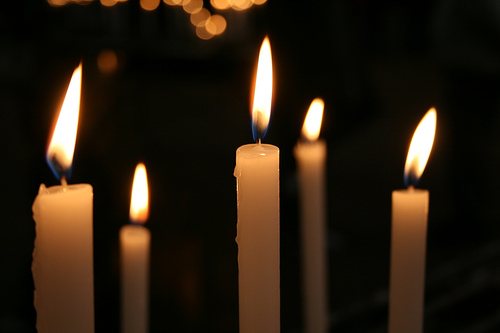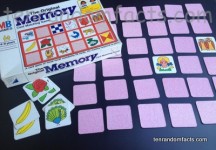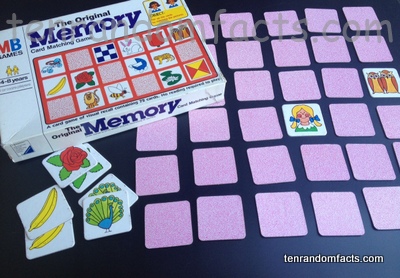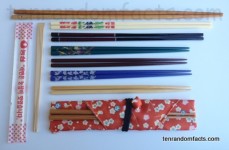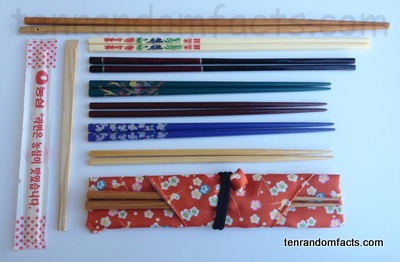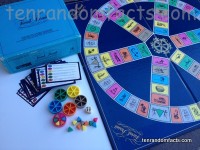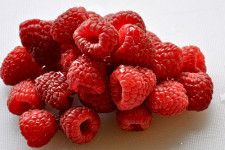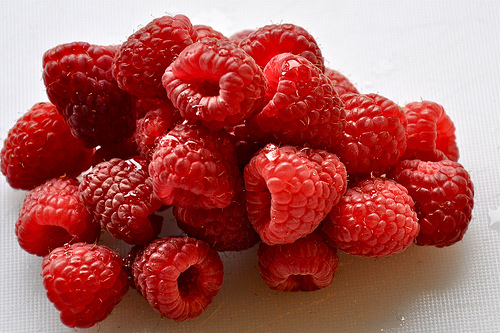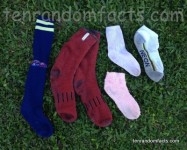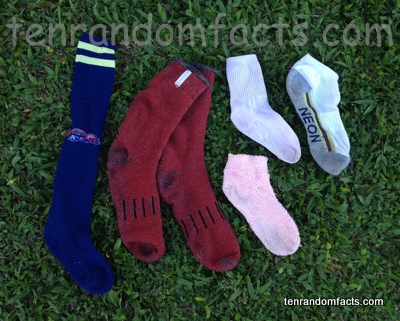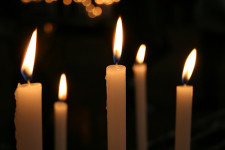
Shadows flicker in the light of the candles.
- A candle is an invention that was originally purposed primarily to provide light using a burning flame and wax, and they are typically cylindrical in shape, and can be wide, short, thin or long, although other moulded shapes are also available.
- Candles generally consist of two primary parts, a wick, which the flame travels along, and the actual wax, which holds the wick and fuels the flame.
- A variety of different waxes can be used to make candles, and historically bees wax; rendered animal fat, known as ‘tallow’, from sheep or cattle; wax obtained from whales, known as ‘spermaceti’; and plant based wax, were used, while modern candles are mostly made from paraffin that originates from petroleum and other products.
- It is believed that the Ancient Romans were the first to make traditional style dipped candles, as early as 500 BC, while various methods and materials have been used over the centuries by other civilisations.
- Candles usually do not need outside assistance once lit, as the flame is fueled by the wax melting and vaporising, which is caused by the heat it produces, combined with the atmospheric oxygen.
Candles
Image courtesy of Esteban Chiner/Flickr
- When modern candles burn, the wick will generally self-combust slowly, due to it curling over as it does so, and this type of wick is known as a ‘self-trimming wick’, while past versions required the wick to be trimmed for the candle to burn efficiently.
- The term ‘candle’ originates from the Latin words ‘candela’ and ‘candere’ meaning ‘torch’ or ‘light’, and ‘to shine’ respectively.
- Candles have been and can be used for the purpose of producing heat, and the flame has a temperature that ranges on average 1000°C to 1400°C (1832°F to 2552°F), and while the wax does not get that hot, care should be taken when using the invention, as the wax can burn skin, and the exposed flame can cause a fire.
- Time has been measured through the use of candles, often by markings on the invention, and sometimes with weights placed periodically in the wax that would drop and clang on a solid object, once the surrounding wax had melted.
- Candles in the modern era are often used for decorative purposes or to generate an atmosphere for celebratory purposes especially on cake; in ceremonies; for romantic purposes; or to enhance the general mood of a room, and they are also used in an emergency when electric lighting fails.
Bibliography:
Candle, 2015, Wikipedia, https://en.wikipedia.org/wiki/Candle
History of Candles, 2015, National Candle Association, http://candles.org/history/
History of Candles, 2015, History of Lighting, http://www.historyoflighting.net/lighting-history/history-of-candles/





